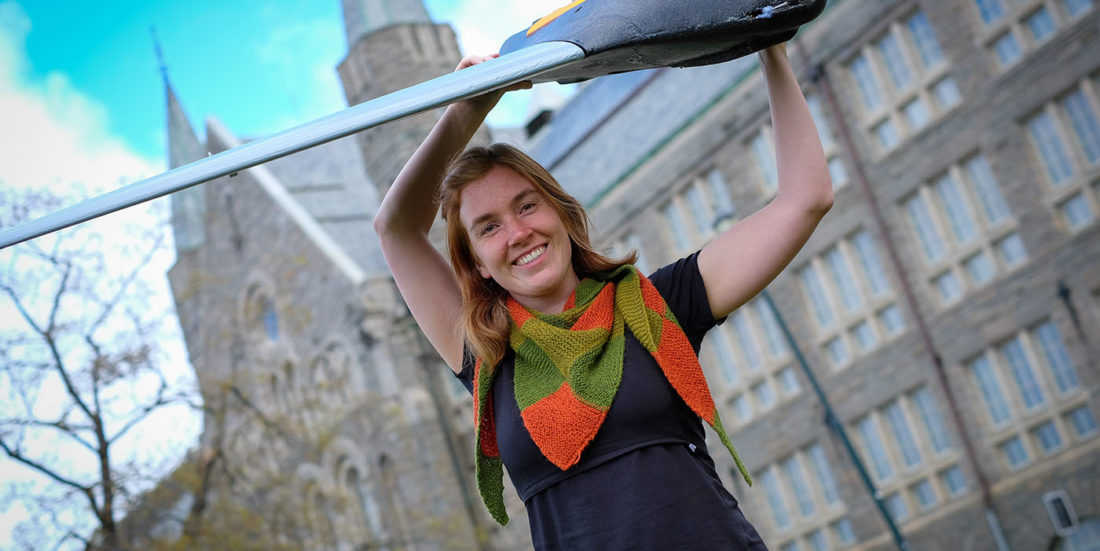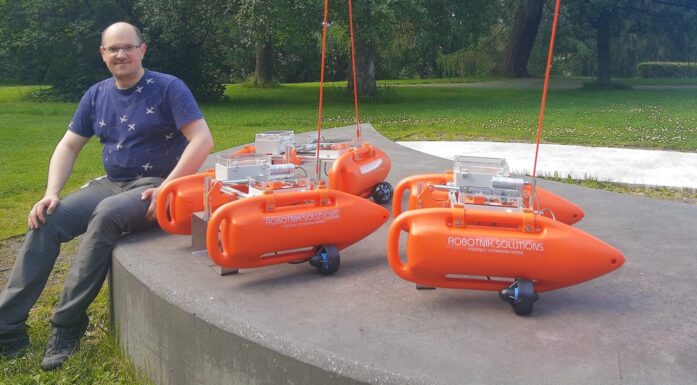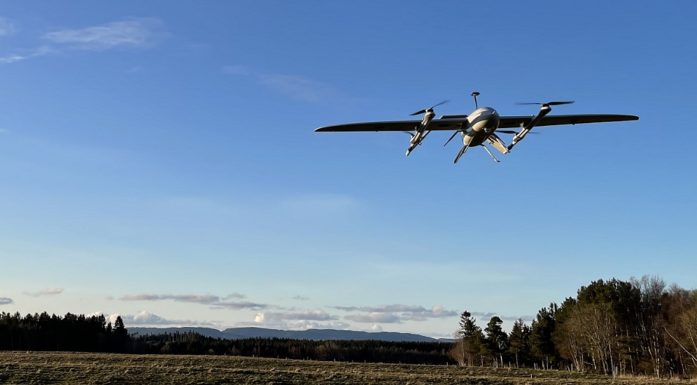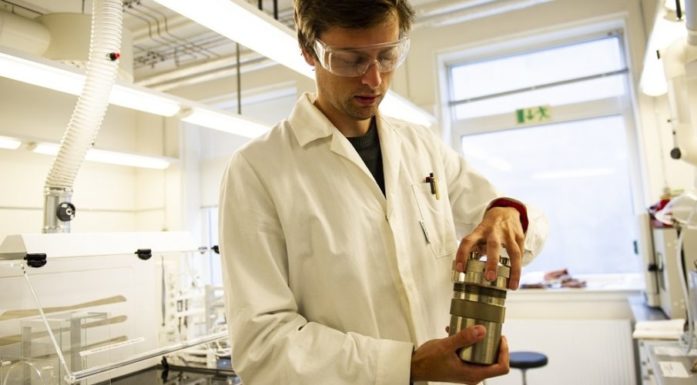Solving equations to steer drones
How do you get a plane-like drone to land with no runway? You use math, of course!
An autonomous fixed-wing drone can look for people who are missing in huge, impassable mountain regions. It can fly food and medicine to isolated areas that rescuers aren’t able to access. It can fly when the fog is thick as pea soup, and it can monitor the Arctic where huge icebergs threaten people and vessels.
Fixed-wing drones, or UAVs (unmanned aerial vehicles), can take on tasks that are difficult or dangerous for humans. They can fly farther and higher and carry more weight than helicopter drones.
But whereas helicopter drones can land vertically on a small spot, plane-like fixed-wing drones need a long runway to get safely back on the ground.
Siri Holthe Mathisen, a PhD candidate at NTNU, has set out to address this exact problem—with a mix of mathematics and aerodynamics, aeronautical engineering and programming.
- You might also like: Robot vision helps detect diseases and keep fish healthy
From town squares to distant icebergs
Holthe Mathisen is doing her doctoral work in NTNU’s Department of Engineering Cybernetics, and is also involved in the Centre for Autonomous Marine Operations and Systems (AMOS). Her focus is on developing mathematical tools to control drones.
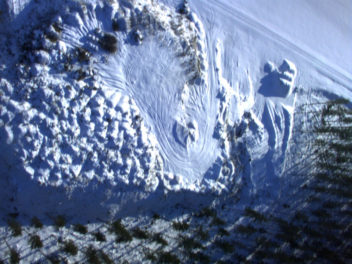
Higher altitudes provide a better overview, and a fixed-wing UAV can quickly scan a large area for missing persons or sheep. Drone Photo: AMOS
Holthe Mathisen hopes to find ways to allow fixed-wing UAVs to land safely on the deck of a small boat in the Arctic or on a destroyed roadway in a village hit by landslides—or in the middle of a crowded town square.
“You’ll be able to send up a fixed-wing drone that drops a GPS locator from a boat in the Arctic onto a distant iceberg. That will allow other vessels to know where the iceberg is at all times. The drone will also be able to monitor ice melt and collect data from vast, inaccessible areas – and then land safely on deck again without destroying valuable equipment or losing precious measurements,” Holthe Mathisen says.
It’s difficult to land a drone precisely on a given spot. There have been attempts to land a fixed-wing UAV using a spiral landing trajectory or a recovery net, but without reducing speed, the risk of losing both equipment and measurements is high.
“In a search and rescue situation, a fixed-wing UAV is able to search a much larger area than a helicopter drone. This can be very useful when it comes to rounding up sheep and reindeer in the mountains, or if you want to get an overview of a landslide area,” says Holthe Mathisen.
- You might also like: Drones help find lost sheep
Slow and steep approach
An airplane, or a fixed-wing UAV, uses lift to stay aloft. When the plane flies horizontally, the air flows rapidly over its wings. The nose of the aircraft points in the same direction as the plane is flying, and the angle of attack, or the angle between the nose of the aircraft and flight path, is zero. If, on the other hand, the plane flies with the nose pointing upwards, the angle of attack is high and causes the air to roll over the wings and stop pulling the plane up. The plane then begins to fall, and at the proper angle of attack, the drag on aircraft also increases.
Researcher Grand Prix
Siri Holthe Mathisen was one of nine PhD candidates selected to participate in the regional Researcher Grand Prix 2016 in Trondheim at the end of September.
Researcher Grand Prix (FGP) is a fun and exciting competition in science communication for doctoral candidates. FGP first holds regional finals in several cities where the best research communicators are selected. Then the regional winners meet in the national finals where Norway's best research communicator is crowned.
Sofie Snipstad from NTNU won the national Researcher Grand Prix 2016 finals in Bergen in early October.
“Instead of a 200-metre-long runway, we’d then need just the amount of space that the drone uses for landing. So the drone could land on a small boat deck or in a clearing,” she explains.
Holthe Mathisen wants to land as slowly and as close to a given point as possible. To accomplish this, she creates an outline of what the landing point looks like, and she uses various mathematical equations that describe both the aircraft and the target.
“I want to fly in a trajectory toward the landing point and hit it as accurately as possible. This has to happen at the same time as the drone is landing as slowly as possible. To manage this, I use a high angle. The mathematical method balances my various parametres, and I can give the fixed-wing UAVs instructions on how it has to fly to be able to land on the target spot,” she says.
The whole time the drone is in the air, the model showing the planned path is also taking into account wind and other unplanned disturbances and updating the instructions.
- You might also like: A bird’s eye view of fish farms
Simulator testing
When Holthe Mathisen has worked out the mathematical model she wants to use, she creates a computer program from the information. She then simulates the flight using this program, and tests whether the control signals intended for the drone are working on the simulator.
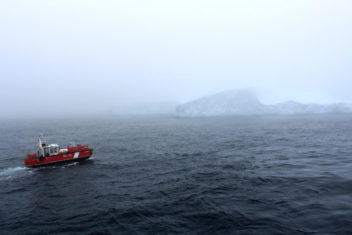
Foggy conditions make it difficult to see drifting icebergs, and then it’s helpful if a drone has GPS tagged them. Photo: Leif Andersson / The Offshore Newfoundland Research Expedition 2015
When everything seems to be working, all the data is entered onto a small PC, like those found in mobile phones. Then it’s time to test out the instructions on a real fixed-wing UAV.
With a battery to power it, a small fixed-wing UAV weighing only four kilos can fly up to 60 minutes and cover about 45 kilometres. It can carry up to one kilo of extra equipment inside the fuselage. A larger and heavier fixed-wing UAV can weigh ten kilos, fly up to 20 hours and travel a staggering 1500 kilometres. When fully equipped with about ten kilos, this distance is reduced somewhat, but fixed-wing UAVs are nevertheless well suited for long-distance missions and collecting a lot of data.
“The mathematical calculations determine the right landing area and the lowest speed. We keep the aeronautics in mind when we generate the calculations. The drones that we use in testing are light and cheap—because crashes occur occasionally when we’re running tests. A bigger and more powerful drone can fly farther, higher and faster,” said Holthe Mathisen.
She adds that larger fixed-wing UAVs can be used with underwater drones for surveillance in the Arctic – and the underwater drones can then send signals to the fixed-wing UAVs, so communication is not impeded by skerries or icebergs.
“If we manage to get fixed-wing UAVs to land safely in a small area, it can allow for many new ways to use drones,” she says.
Read the Norwegian version of this article at our sister site, gemini.no
